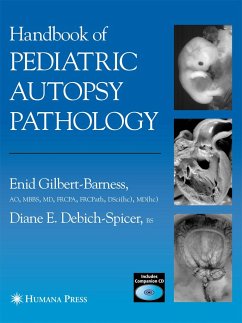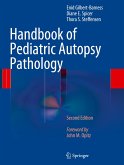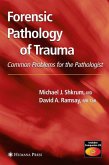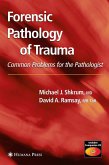A comprehensive reference guide to the successful performance of pediatric autopsies and to the optimal recognition and interpretation of their pathologic findings. The authors cover such major developmental disorders as hydrops, chromosomal defects, and congenital abnormalities, metabolic disorders, and review the major organ systems. Additional chapters address sudden infant death, cytogenetics, the medical and forensic autopsy, special procedures, cultures and infection control, and biological hazards at the autopsy. Numerous standard reference tables, copious illustrations and drawings, and an appendix at the end of each chapter provide a wealth of practical information and bibliographic citations. Pathologists have long recognized that the pediatric autopsy requires great care in technique and dissection to ensure that easily overlooked malformations are recognized and accurate diagnoses are made. Working in the tradition of the master pediatric pathologists, the highly experienced practitioners Enid Gilbert-Barness, MD, and Diane E. Debich-Spicer have created in the Handbook of Pediatric Autopsy Pathology a comprehensive reference guide to the successful performance of pediatric autopsies and the optimal recognition and interpretation of their pathologic findings. The authors cover such major developmental disorders as hydrops, chromosomal defects, congenital abnormalities, and metabolic disorders. The reviews of the organ systems encompass the cardiovascular, respiratory, gastrointestinal, renal, central nervous, and skeletal systems, plus the male and female genitourinary systems, the eye and adnexa, and the thymus, spleen, lymph nodes, and immunodeficiency. Additional chapters address sudden infant death, cytogenetics, the medical and forensic autopsy, special procedures, cultures and infection control, and biological hazards at the autopsy. Numerous standard reference tables, copious illustrations and drawings, and an appendix at the end of eachchapter provide a wealth of practical information and bibliographic citations. A value-added compact disk provides color versions of over 400 selected illustrations found in the book.
Cutting-edge and detailed, the Handbook of Pediatric Autopsy Pathology offers the prosector unequaled guidance to performing a pediatric autopsy, making an accurate diagnosis, and-where malformations are involved-explaining the implications of possible recurrences in future pregnancies.
Cutting-edge and detailed, the Handbook of Pediatric Autopsy Pathology offers the prosector unequaled guidance to performing a pediatric autopsy, making an accurate diagnosis, and-where malformations are involved-explaining the implications of possible recurrences in future pregnancies.
From the reviews of the second edition:
"The purpose is to fill the void in literature for pathologists performing pediatric autopsy. ... It is written for pathology residents and physicians who perform perinatal or pediatric autopsies. ... There are no other comprehensive pediatric autopsy pathology books or references which contain such rich objective information that is imperative for a comprehensive, well-done autopsy. ... I highly recommend this book." (Raquel K. Walsh Jahnke, Doody's Book Reviews, March, 2014)
"The purpose is to fill the void in literature for pathologists performing pediatric autopsy. ... It is written for pathology residents and physicians who perform perinatal or pediatric autopsies. ... There are no other comprehensive pediatric autopsy pathology books or references which contain such rich objective information that is imperative for a comprehensive, well-done autopsy. ... I highly recommend this book." (Raquel K. Walsh Jahnke, Doody's Book Reviews, March, 2014)








